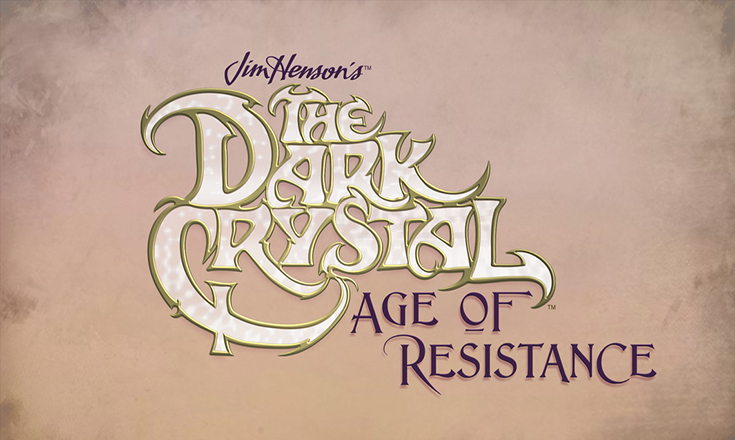For a certain generation, mainly those born between 1980 and 2000, The Dark Crystal, directed by Jim Henson and Frank Oz and released in 1982, was a big deal. The last surviving Gelfling in all of Thra, having been raised by the noble Mystics, must set out on a perilous journey to save his world. He goes in search of a shard of The Dark Crystal, which had once provided balance to Thra. The Skesis, formerly the Lords of Thra and the Gelfling, had used the Crystal’s power for evil after it was broken. Only the missing piece, in the hands of a Gelfling, could restore peace the world of Thra.
This is one of Hensen’s masterpieces, a world of utter wonder and darkness. There was a texture and realness in the puppets. There were voices that transported us and movements that haunted us. There was complexity in that world. We were convinced. Jim Henson excelled at world building; from Sesame Street to Labyrinth we truly believed. Being given a second chance to visit that world, that we know Henson drew and wrote out, was wonderful and terrifying. The only fear was our childhood letting us down. I’ve talked to a lot of people about Dark Crystal: Age of Resistance and I’ve gotten mixed reviews from broad demographics. The puppets had too much CGI. There wasn’t enough CGI. It should have been animated. It should have been live action. The long and short of all of this is; we never should have touched such a classic. I can’t know how these opinions are stacked; the exact ratio of puppet to modern technology. However, my 4 out of 5 stars has minimal bearing on aesthetics and is purely story driven; this is the layered complexity that funding and logistics never allowed Henson to give us and for that, I stand amazed. No one has argued with the writing.
Age of Resistance relies heavily on tropes and archetypes, in the most complimentary way possible. We are introduced to seven clans, with rich culture and their overlords, including the immortal Skeksis who are viewed as gods incarnate. It is clear that big budget TV and streaming content, such as Game of Thrones, has changed both the stakes and landscape of what content can be. This is the story of heroes, unlearning their history and setting out to save their world as it falls in a fantastic, deeply woven story that resembles myth.
Any Dark Crystal spin-off spent decades in development Hell due to both logistics and differences of opinion within the creative teams. In addition to Age of Resistance Netflix has also released an excellent Making Of Documentary featuring interviews with creators and voice actors. Eventually, the creators started talking about culture; who were the people that populated this universe? What ideals did they hold? Anyone who has seen the movie knows these questions have tragic answers, but that’s anthropology. This is the story of not just the heroes and villains we came to know in the film but the world of Thra itself.
This is a rich world; Deet comes from an underground tribe who must travel to the surface to transmit a deadly prophecy. Rian is a young castle guard, guided by honor and desiring the respect of his father who sees his love killed by the Skeksis. Brea is a princess and the youngest daughter of the All-Maudra, the matriarchal leader of the seven clans, who desires knowledge. Hup is a Podling, considered a lesser race, who aspires to become a Paladin, the highest class of warriors. These and other characters are brought together as they discover the true intentions of the Skeksis. The Skeksis were left as guardians of The Crystal of Truth by Mother Aughra when she abandoned the realm to search among the stars. In their quest for immortality, the key to the power they hold over the Gelfling, the Skeksis corrupt the Crystal of Truth and begin draining Gelfing of their essence.
The voice acting is fantastic; Bill Hader and Andy Sandberg embody Frank Oz with uncanny accuracy. Sigourney Weaver narrates with calm drama. Simon Pegg, Mark Hamill, Eddie Izzard and others give life to the characters. More important than the voice acting is the puppets themselves. Henson Studios initially tried to use entirely CGI, however, the characters became flat. As they made the move to puppets, the CGI company they had worked with proposed layering CGI over physical puppets. This allowed for additional facial emotion while retaining the movement and presence of puppetry. Personally, I love the visual aesthetics; these characters and their surroundings reflect not only the original film but also Henson’s sketches and concepts that never made it into the film. The Skeksis remain uncanny and sinister, the Gelfing are given a rich culture, and the Mystics, podlings, and other inhabitants of this world begin to liken Thra to Middle Earth or Westeros.
The reliance on archetypes transcends Age of Resistance into the greater hero story. As Joseph Campbell states in Power of Myth “The happy ending is justly scorned as a misrepresentation.” The potential for a second season exists but sometimes, we earn our tragedies. Prequels in general have foregone conclusions so it is up to the creators to hook the viewer with history. In that regard, I believe Age of Resistance absolutely succeeds. Our visual experience of Dark Crystal cannot be changed, but from a storytelling perspective this long awaited prequel satisfies the myths we have carried since childhood.
Author

Morgan is a Seattle Central alumni currently attending Oregon State University where she is majoring in Anthropology. In addition to writing, she enjoys painting and linguistics. She lives in a very small house with a very fat cat.







Be First to Comment